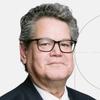Patents and the Expectation of Success Doctrine
What is Reasonable, Tension With Enablement, Best Practices for Patent Drafting and Prosecution
Recording of a 90-minute premium CLE video webinar with Q&A
This CLE course will provide patent counsel with guidance on the doctrine of expectation of success. The panel will examine how much is reasonably needed and the tension between the doctrine and enablement. The panel will discuss recent cases and will offer best practices for patent drafting and patent prosecution.
Outline
- History of the requirement for a reasonable expectation of success
- The requirement for a reasonable expectation of success and enablement
- Best practices for patent drafting
- Best practices for patent prosecution
Benefits
The panel will review these and other key issues:
- Under what circumstances should the reasonable expectation of success be argued during prosecution at the PTAB? During litigation?
- What evidence is necessary to support a reasonable expectation of success argument?
- How can patents be drafted to establish that the disclosure enables the claimed subject matter but that skilled persons would not have had a reasonable expectation of success based on the prior art?
Faculty

Daniel J. Pereira, Ph.D.
Partner
Merchant & Gould
Dr. Pereira, Ph.D., leverages his extensive background in science and law to deliver strategic patent portfolio... | Read More
Dr. Pereira, Ph.D., leverages his extensive background in science and law to deliver strategic patent portfolio management, client counseling, and litigation services. Specializing in technologies such as chemical technologies, metallurgy, solar, bioinformatics, semiconductors, OLEDs, solid-state batteries, medical diagnostics, AI and computer-related technologies, pharmaceuticals, and biotechnology, he adeptly navigates the complexities of patent prosecution, IP litigation, and patent interferences for his clients. As a partner at Merchant & Gould's Washington D.C. Area office, Dr. Pereira focuses on delivering comprehensive intellectual property services to innovators. He helps them navigate the legal landscape to protect their inventions and maximize the value of their IP assets. Dr. Pereira is adept at handling intellectual property asset acquisitions, offering thorough risk assessment and due diligence to secure his client's future growth and success. He has a strong background in proceedings before the Patent Trial and Appeal Board (PTAB), district court patent litigations, and appeals at the Federal Circuit. Dr. Pereira's proactive approach to pre-litigation counseling and litigation avoidance is highly valued by clients seeking to navigate the complex landscape of intellectual property law.
Close
Zachary Van Engen
Attorney
Fitch, Even, Tabin & Flannery
Mr. Van Engen has a broad intellectual property practice including utility and design patent preparation and... | Read More
Mr. Van Engen has a broad intellectual property practice including utility and design patent preparation and prosecution in the United States and abroad, domestic and foreign trademark prosecution, product clearance studies, freedom-to-operate and infringement analysis, and IP-related due diligence and transactions. He also assists with post-issuance proceedings before the Patent Trial and Appeal Board and other litigation matters. Mr. Van Engen drafts and reviews a wide variety of business contracts, commercial agreements, and intellectual property agreements, including licenses, non-disclosure agreements, product distribution agreements, trademark coexistence agreements, among others.
Close
Bryan K. Wheelock
Principal
Harness Dickey & Pierce
Mr. Wheelock’s practice includes the preparation and prosecution of patent and trademark applications and... | Read More
Mr. Wheelock’s practice includes the preparation and prosecution of patent and trademark applications and drafting intellectual property agreements, including non-compete agreements. He has brought and defended lawsuits in federal and state courts relating to intellectual property and has participated in seizures of counterfeit and infringing goods. Mr. Wheelock prepares and prosecutes U.S. and foreign patent applications for mechanical and electromechanical devices, manufacturing machinery and processes, and metal alloys for clients in the medical device, consumer products, and agrifood tech industries, among others. He also does a substantial amount of patentability searching, trademark availability searching, and patent and trademark infringement studies.
Close